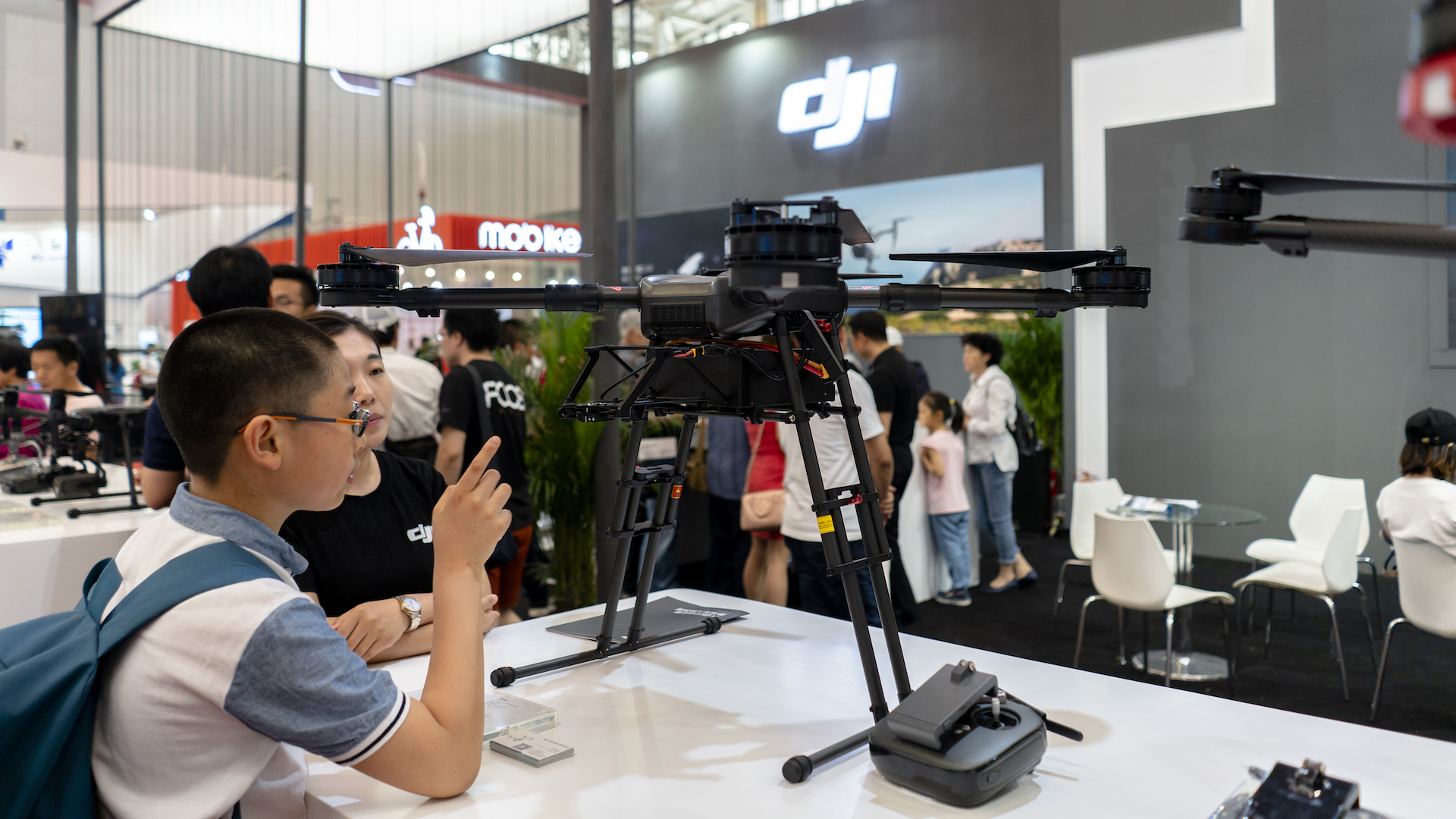

The world’s leading drone manufacturer is located in Shenzhen, China, so it’s only right that the 2018 World Drone Congress and the third annual Shenzhen International UAV Expo 2018 held their collective three-day exhibitions in the industrial Chinese city this past weekend.
According to Xinhua News, 2.9 million hobby drones were manufactured in China last year, a national year over year increase of 67 percent. There are now more than 1,200 drone companies in the country, either developing unmanned aerial vehicles or the components required for drones. DJI is responsible for more than 70 percent of the world’s drone market, making Shenzhen the inarguable hub of drones and their production.
Yang Jincai, chairman of Shenzhen UAV Industry Association, reiterated that notion and said that the Chinese drone industry has been growing rapidly in industries such as power line inspection, mapping, firefighting, search and rescue, public safety, and agriculture. “The civilian drone industry is developing fast,” he added.
This year’s World Drone Congress and Shenzhen International UAV Expo had hundreds of drones on display, with much of the focus highlighting artificial intelligence-based drone technology, ranging from synchronized flying (similar to Intel’s Shooting Star drones) and intuitive camera drones to agriculture-rooted drone technology and firefighting UAVs.
Shenzhen HighGreat Innovation Technology Development, for example, showcased its synchronized UAV technology, which has been a popular tool at weddings and other ceremonies in China. “In the open air, they can form the shape of a dolphin, a seagull or a heart,” explained CEO Geo Jianmin. “The drones can deliver rings and flower bouquets.”
Meanwhile, mini-drones that can take selfies of you before folding back into their smartphone cases were being presented nearby. This past weekend was essentially a humming, vibrating hub of innovation being shared and displayed to visitors ranging from drone-savvy people to complete newcomers and corporate clients. Another drone on display was a firefighting UAV that had a payload capacity of 55 pounds, which it uses to carry fire extinguishing chemicals to reach vantage points inaccessible to firefighters on the ground.
There were also numerous artificial intelligence-infused drones being presented, such as UAVs with sophisticated obstacle avoidance and anti-collision technology, multi-point payload dropping, and delivery drones. Multi-point payload systems would be particularly useful in firefighting as the most important sources of fire could be aerially focused on first and autonomously.
Another drone was a portable tilt-rotor UAV that was specifically designed for remote mapping of the environment, which had a maximum speed of 47 mph. And, the agriculture drone, weighing 441 pounds yet capable of carrying more than 660 pounds of fertilizer.
The three-day display of hundreds of different kinds of drones and their corresponding software showcased just how widespread and diverse the UAV industry really is, as new use cases just keep springing up on a yearly basis. It seems pretty safe to say that next year’s expos will only grow in popularity as the industry itself just keeps expanding.